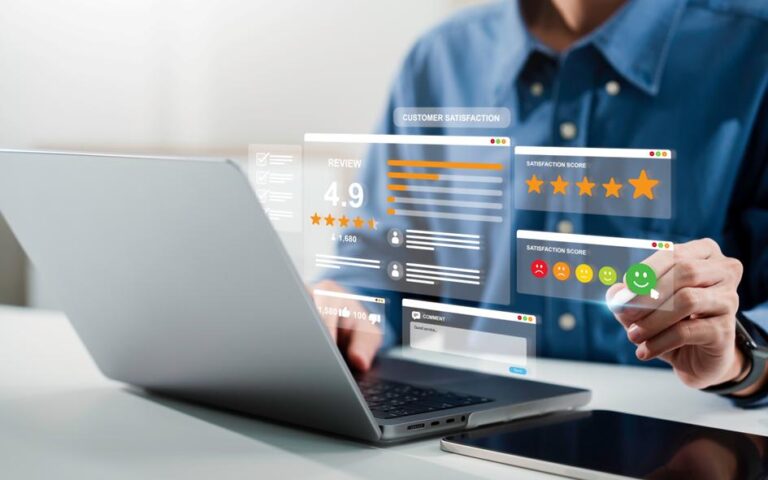Automating inventory management decisions based on current customer demand often affects not only the supply but the entire process of production planning. Yukoil is the leading lubricants manufacturer — and recently implemented a DDMRP based inventory management system.
As a result, with the growth of production and sales of finished products, the company was able to reduce stock levels, overstock amounts, and illiquid assets — and increase the efficiency of working capital. In this article, we’ll take a closer look.
A Challenging Global Market
Yukoil is a lubricant manufacturer that supplies products in more than 50 countries on all continents. At this scale, there are no easy marketing and logistics solutions. The markets for lubricants and automotive and industrial oils are highly competitive and dynamic. Manufacturers must seek to distinguish themselves according to:
- service level
- product quality
The raw materials for Yukoil products are oil fractions, and the world petroleum market has been and remains difficult in terms of protecting supply chains.
Yukoil produces lubricants for 300+ items under its own brand and those of partner companies.
For each brand, Yukoil provides a whole line of finished products — volume and packaging material, from a tube to a metal barrel. The total range of finished products is 2000+ SKU.
The production of such a wide range of products involves a large quantity of raw and intermediate materials, building complex supply chains. The requirements for planning and dispatching are increasing.
The price of mistakes in supply is also growing. Because of them, it becomes difficult to maintain the production schedule. The absence of at least one component in the warehouse can lead to production downtime, untimely shipments of products, and loss of customers. After receiving a late delivery, workshops must work overtime to catch up.
At the same time, illiquid balances can accumulate in the warehouse, which means that part of the working capital is “frozen.” In addition, working time and other resources are spent on storing and accounting for illiquid materials.
In the past, Yukoil solved these problems with the help of Excel, through the efforts of production and supply chains. The procurement process was not formalized or automated. Basic logistical conditions for each SKU were not determined. Additional difficulties arose with the processing of special orders that were formulated for specific clients.
This state of affairs hindered the company’s development. Reliable modern tools were required for inventory management in production, the formation and protection of supply chains, and material and production planning.
A New Solution to Old Problems
In search of a solution, Yukoil’s management began to evaluate the Demand Driven approach. They were drawn to advantages like:
- Planning needs for the materials supply according to consumer demand, which would lead to a significant reduction in lead-time
- Using an algorithm to calculate stock buffers, which would allow executives to respond quickly to market changes and smooth out surges or falling sales
Implementing Demand Driven principles would mean ensuring the constant availability of stocks that were necessary to meet demand for the entire range of finished products, semi-finished products, raw materials and containers, numbering over 4,500 SKUs.
It also meant training key employees in the Demand Driven methodology.
The purpose of this training: to facilitate a deep understanding of the idea of managing material flow management based on current demand. First, key employees were trained under the Demand Driven Planner program in the form of a two-day supply chain management in production seminar. Further training was conducted at each of the three stages of the project implementation and covered all levels of supply chain management — operational, tactical ,and strategic.
“All complex questions have simple answers. And the DDMRP methodology is understandable for both managers and performers.” Dmitriy Vasiliev, CFO, Yukoil company
Project Results
Launching new technologies is never an easy process. Staff training and immersion in a new approach had to be combined with current work. And of course, nothing can make routine production problems disappear. Therefore, the cohesion of the team was key — as was the realization that automating the management of material flows would drive results across the whole company.
Now let’s take a look at the effects of Demand Driven methods on Yukoil’s inventory management and production indicators.
YUKOIL
June 2019 to March 2020
Stocks of finished goods decreased by 8% while sales grew by 13%.
The number of finished product SKUs in the “Overstock” status decreased by 60%.
But the main benefits are qualitative changes to Yukoil’s management processes — not only for stocks but also for production as a whole.
The picking has become systematic, the order fulfillment time has been reduced, and a rhythmic production cycle has been established. The company is improving labor productivity and service indicators. Orders that were shipped to the consumer have significantly increased. Storage facilities for materials and finished products are used more rationally, while accounting is streamlined.
According to Dmitry Vasiliev, the results of the implementation exceeded initial expectations and went beyond inventory management, affecting all areas of managers’ work: “The purpose of automation was to help certain divisions of the company — the sales, supply, distribution departments. But together with such help, we got a specialist’s worldview shift.”
“There was no need to look for new information — the necessary data was available, it was simply misinterpreted. But as itself, the random accumulation of information did not lead to success. The meaning of each individual event is manifested in the context of subsequent similar events, that is, in the flow.” Dmitriy Vasiliev. CFO, Yukoil company
Scaling to Intensify Results
After the implementation in production, the management of Yukoil decided to implement Demand Driven methods in distribution facilities, as well.
We saw a development zone in this direction. The initial conditions were as follows:
- Four regions with over 400 SKUs of finished products each
- Warehouse stocks were replenished based on the personal judgment of regional leaders regarding sales forecasts and necessary stocks
- Inventory size seemed to be inflated, and given the positive result of the implementation in production, there were positive expectations in the regional offices
This implementation was easier, as the company was already on this path. We started by assembling a team and conducting training. Then, we made a snapshot of current processes and made changes according to the methodology. Finally, four months later, we evaluated the results on Yukoil’s inventory management and production indicators.
YUKOIL
May to November 2021
Inventory reduced from UAH 13 million to UAH 6.5 million, in spite of growing sales.
The number of SKUs in “Overstock” status went from 81% to 45%
The client also noted other results, including a significant service level improvement — warehouses now almost always have popular products, which ensures steady sales growth. And at the same time, there are almost always no slow-moving products in warehouses (delivered “LTM”), which in some cases reduces sales, but significantly improves inventory turnover.
The IT director of Yukoil also noticed improvements like:
- Eliminating inconsistencies between production and sales
- Building and formalizing the processes of supply and production planning
- Centralizing the management of all supply chains — both raw materials and finished products, including distribution — in a single system
- Automating the exchange of information between systems based on the methodology and accounting and document management programs used by the company
Thus, the flow of incoming data was correctly configured, a necessary condition for the correct work with information.
Conclusions
The interest in Demand Driven methods will only increase in the future. The uneven exit of individual countries and sectors of the economy from quarantine restrictions caused by the COVID-19 pandemic increases the instability and unpredictability of markets.
In the conditions of global economic turbulence, the competitiveness of companies largely depends on the prompt response to fluctuations in market demand — and the effective use of working capital. Demand Driven methods represent best practices in the organization of production and supply, and helps companies find answers to the challenges of the modern economy.












